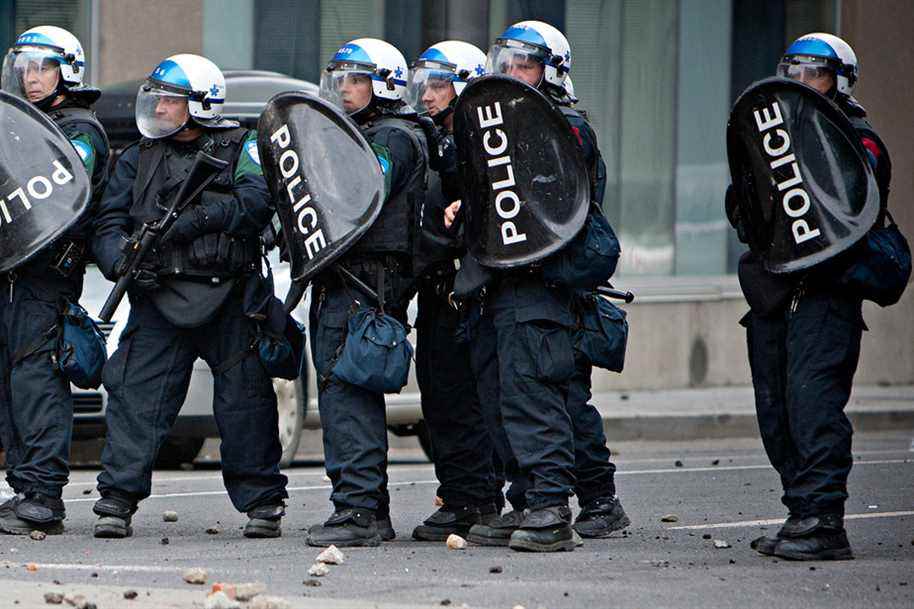“We declare this demonstration illegal. This sentence, Alain Simoneau pronounced it dozens (perhaps even a hundred) times in 2012, then commander of neighborhood station 21. The maple spring was without hesitation one of the most significant moments of his police career.
Posted at 5:00 a.m.
Neighborhood police station 21 in Montreal is one of the busiest in Quebec. Above all, it is on its territory that the Place Émilie-Gamelin is located, the starting point for all the nocturnal demonstrations during the student strike.
“Even if our team found itself in four different territories, since the demonstration was leaving from our home, accountability came back to us,” says Mr. Simoneau, in a telephone interview that he sometimes has to interrupt in order to prepare for the press conference. of the new general manager of the Montreal Canadiens. It is that the ex-police officer now takes care of the security of Groupe CH.

PHOTO OLIVIER PONTBRIAND, LA PRESSE ARCHIVES
Alain Simoneau, commander of neighborhood station 21, communicates with his troops after regaining control of a barricade erected by demonstrators at the corner of Ontario and Saint-Denis streets on May 20. It was the first demonstration to be held after the entry into force of the controversial Law 78.
Alain Simoneau remembers 2012 as a very demanding period, physically and mentally.
You have to remember that the demonstrations were repeated, non-stop, day after day. Sometimes we had three a day.
Alain Simoneau, commander of neighborhood station 21 during maple spring
The police also had to ensure the security of certain actions such as the occupation of the Cégep du Vieux Montréal and the premises of UQAM, he adds.
During the student strike, the commandant followed all the demonstrations on board a flute truck, ready to whisper directives to the protesters through a loudspeaker. “If there was an incident, I would report it to the command center and they would decide whether to involve people in restoring order [le groupe d’intervention]. If that was the case, I was no longer in charge of the event,” he explains.
The right to protest
It is Roch Deroy and his team who enter the scene, with their visor, shield and baton, as soon as an order to disperse is given, in 2012. It is Mr. Deroy who gives command to his troops and who decides when irritating gases are thrown over crowds.
It was such a complex file because the majority of police officers also had children or teenagers at the time and they had their own position on the conflict. Still, on the ground, it was necessary to make allowances when there were overflows.
Roch Deroy, retired police officer from the SPVM intervention group
“What I find unfortunate in this whole story, he continues, is that the reasons for the demonstrations were completely justified. We live in a democratic society where we have the right to demonstrate. But during maple spring, there are negative elements that seeped into the protests to scrape them off. […] It violated the right of young people to express themselves and to demonstrate, ”he laments.

PHOTO PATRICK SANFAÇON, LA PRESSE ARCHIVES
Window of neighborhood station 21 smashed by demonstrators
Guillaume Fillion, who was part of the intervention group in 2012 and who is now an investigator at the SPVM, claims to have seen billiard balls, nuts, empty beer bottles and rocks thrown in his direction or that of his colleagues. The time when two Molotov cocktails landed near his team particularly marked him.
“At one point, on rue Sanguinet, near the Cégep du Vieux Montréal, young people threw rocks at our vehicles. We caught up with the three guys from Outremont and brought in the parents who couldn’t believe their child had done that. It was not always the kind of clientele that one imagines coming into confrontation with the police,” says Mr. Fillion.

PHOTO MARTIN TREMBLAY, THE PRESS
Sébastien Roy, from the SPVM intervention group
Sébastien Roy, who has been part of the intervention group since 2010, always managed to keep his calm even when he was insulted or spat on. “Whether I’m for or against the cause, it doesn’t change the work I have to do. As long as the demonstrations go well, I do not intervene. I’m here to enforce regulations and laws. »
Alain Simoneau also points out that the vast majority of demonstrations went smoothly in 2012. “It is wrong to claim that there was violence during those six or eight months. There were spikes, but the vast majority of protests did not end in total disorder,” he argues.
“Unfortunately, we often remember those that were more chaotic, where there were acts of violence and mass arrests. »
Roch Deroy is convinced that the student movement of 2012, even if it was sometimes tinged with violence, changed the way we look at young people. “If ever a government still wants to tackle the fundamental realities of students, it is better to do so early because young people are capable of expressing themselves, of mobilizing and that can last a long time. »

